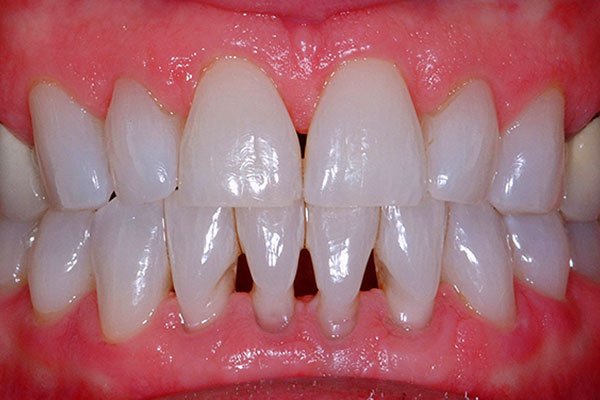Does Braces Fix Tmj
The relationship between braces and TMJ (Temporomandibular Joint) disorders is complex and has been a topic of debate among dental and medical professionals. To understand whether braces can fix TMJ, it’s essential to first comprehend what TMJ disorders are and how they relate to orthodontic treatments like braces.
TMJ disorders refer to a range of conditions that affect the temporomandibular joint, which connects the jawbone to the skull. These disorders can cause pain in the jaw area, clicking or popping of the jaw, difficulty chewing, and even headaches. The causes of TMJ disorders are varied and can include jaw injuries, arthritis, habitual teeth grinding or clenching, and misalignment of the teeth or jaw.
Braces, or orthodontic appliances, are commonly used to correct misalignments of the teeth and jaw. They work by applying gentle pressure to the teeth over time, gradually moving them into a more aligned position. This realignment can potentially affect the functioning of the TMJ, as the position of the teeth and jaw can influence how the joint operates.
Can Braces Fix TMJ?
The answer to whether braces can fix TMJ disorders is not a simple yes or no. In some cases, braces can indeed help alleviate TMJ symptoms, especially if the disorder is related to a misalignment of the teeth or jaw. By correcting the bite and ensuring the teeth come together properly, braces can reduce strain on the TMJ, potentially decreasing pain and discomfort.
However, it’s crucial to note that braces are not a direct treatment for TMJ disorders. If a person has a TMJ disorder, they should first consult with a dentist or an orthodontist who has experience in treating such conditions. In some cases, other treatments like bite guards, physical therapy, or even surgery might be necessary to address the TMJ issue directly.
Problem-Solution Framework for TMJ and Braces
- Identification of the Issue: A thorough examination to determine if the TMJ disorder is related to the alignment of the teeth or jaw.
- Consultation with Specialists: Meeting with an orthodontist and possibly other specialists to discuss the potential benefits and risks of using braces to address the TMJ disorder.
- Treatment Plan: Developing a customized treatment plan that may include braces, along with other treatments like physical therapy or the use of a mouthguard to protect the jaw while sleeping.
- Monitoring Progress: Regular check-ups to monitor the progress of the treatment and adjust the plan as necessary.
Comparative Analysis: Braces vs. Other TMJ Treatments
- Braces: Useful for correcting misalignments that may contribute to TMJ disorders, but not a direct treatment for the condition.
- Mouthguards and Splints: Can help reduce teeth grinding and clenching, providing immediate relief to the TMJ.
- Physical Therapy: Exercises can help strengthen the jaw muscles and improve the functioning of the TMJ.
- Pain Relief Medication: Temporarily alleviates pain and discomfort but does not address the underlying cause.
Historical Evolution of TMJ and Orthodontic Treatments
The understanding and treatment of TMJ disorders have evolved significantly over the years. Historically, the focus was more on treating the symptoms rather than addressing the root cause. With advancements in orthodontics and a better understanding of the relationship between teeth alignment and TMJ health, treatments have become more holistic, often combining orthodontic appliances like braces with other therapies to achieve better outcomes.
Future Trends Projection
The future of treating TMJ disorders with braces and other orthodontic treatments looks promising, with ongoing research aimed at improving our understanding of the relationship between jaw alignment and TMJ health. Advances in technology, such as 3D printing and digital dentistry, are expected to play a significant role in creating more personalized and effective treatments.
Technical Breakdown: How Braces Affect the TMJ
- Realignment of Teeth: Braces move the teeth into a more correct position, which can reduce stress on the TMJ.
- Bite Correction: Ensuring the upper and lower teeth fit together properly can alleviate strain on the jaw joint.
- Muscle Relaxation: By correcting the positioning of the jaw, braces can help relax the muscles around the TMJ, reducing pain and discomfort.
Myth vs. Reality: Braces and TMJ
- Myth: Braces can fix all TMJ problems.
- Reality: While braces can help in cases where TMJ disorders are related to tooth or jaw misalignment, they are not a universal solution for all TMJ issues.
Resource Guide
For individuals considering braces as a potential solution for their TMJ disorder, it’s essential to consult with both an orthodontist and a dentist who specializes in TMJ disorders. They can provide a comprehensive evaluation and recommend the most appropriate treatment plan.
FAQ Section
Can braces cure TMJ disorders?
+Braces can help alleviate TMJ symptoms in cases where the disorder is related to a misalignment of the teeth or jaw. However, they are not a direct cure for all TMJ disorders and should be used as part of a comprehensive treatment plan.
How long does it take for braces to start helping with TMJ symptoms?
+The time it takes for braces to start helping with TMJ symptoms can vary significantly from person to person. Some individuals may notice improvements within a few months, while for others, it may take a year or more as the teeth and jaw adjust to their new positions.
Are there any risks associated with using braces to treat TMJ disorders?
+While braces can be an effective part of a treatment plan for TMJ disorders, there are risks associated with their use, such as tooth decay, gum disease, and root resorption. Regular dental check-ups and good oral hygiene practices can mitigate these risks.
In conclusion, while braces can be a valuable tool in addressing TMJ disorders related to misalignment of the teeth or jaw, they should be considered as part of a broader treatment strategy. Consulting with dental professionals and specialists in TMJ disorders is crucial to determine the best course of action for each individual case.

